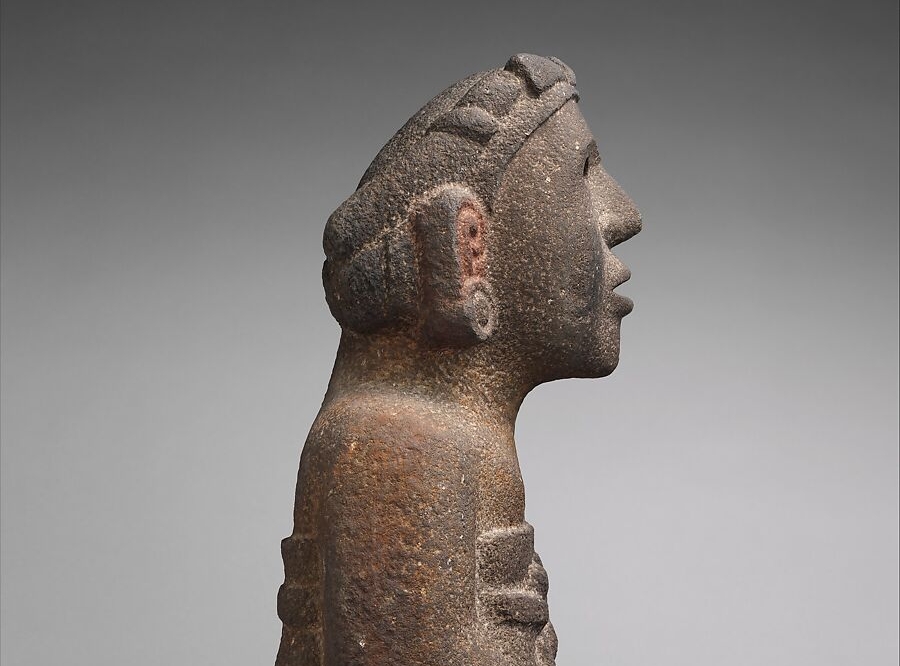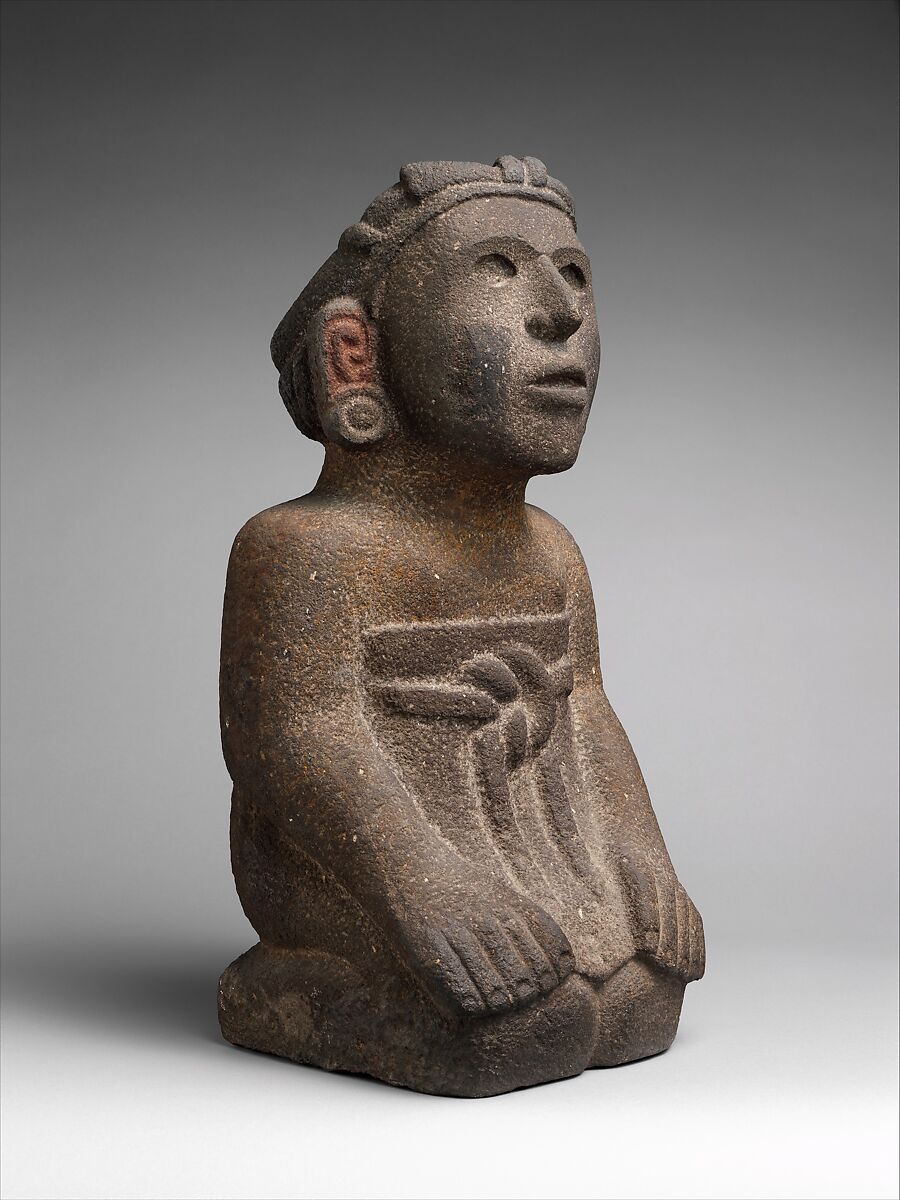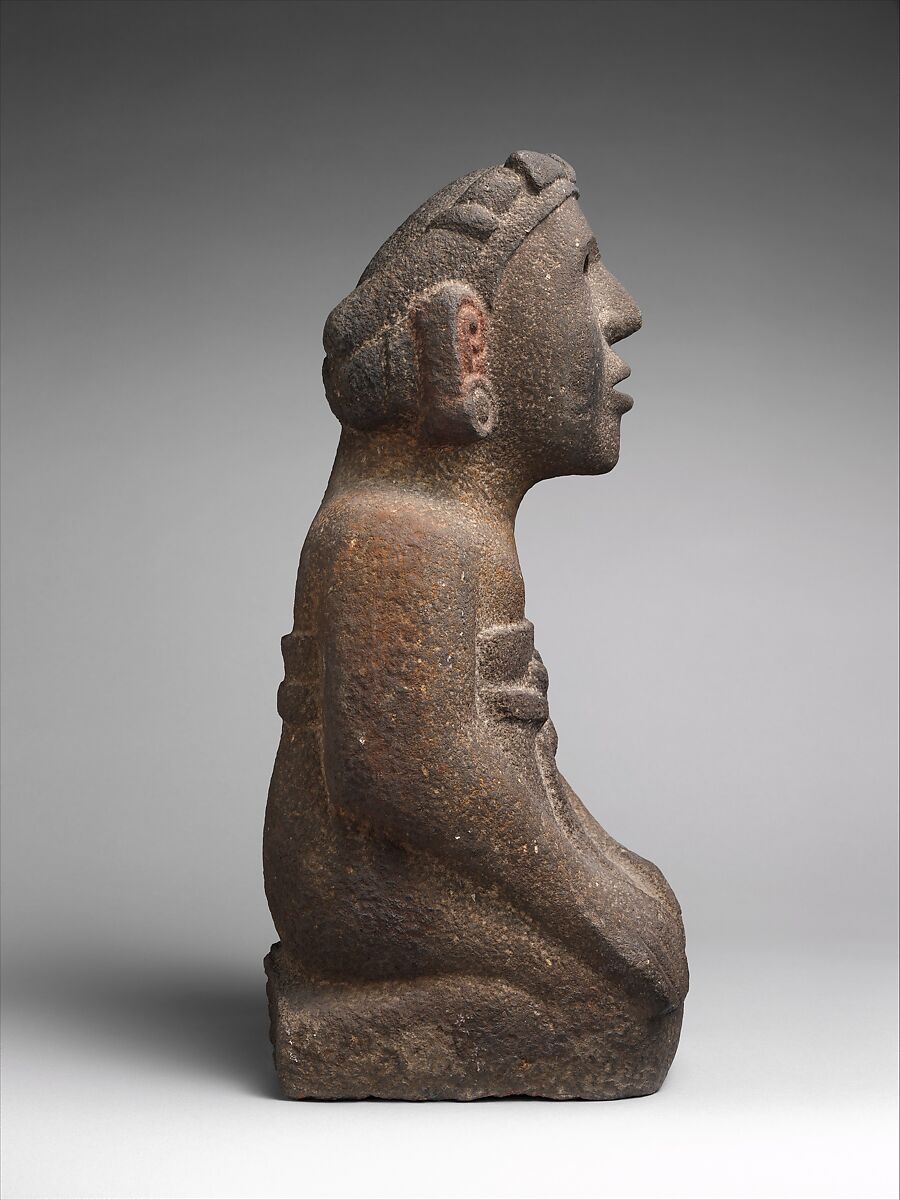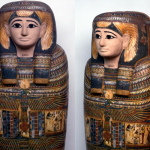Kneeling female figure

This ceramic or stone figure represents a kneeling female from Aztec Mexico, dated to ca. 1325–1521 AD. It is part of the Metropolitan Museum of Art (Met) collection.

Aztec sculptors followed distinct formal and aesthetic conventions when portraying the human figure. Seated female figures are typically shown with their legs folded beneath them and their feet turned inward so that the toes touch behind. Their hands rest naturally on their knees.

This sculpture represents an elegant Aztec woman dressed in a short, unadorned skirt secured at the waist with a knotted belt rendered in low relief. She wears no upper garment, and her ears are adorned with circular ornaments. Her hair is arranged in two coiled strands wrapped around her head and gathered at the top. Her face is softly modeled, with rounded contours and a gentle, lively expression. The eyes and mouth appear as recessed oval shapes that once held inlays.

Figures of women without divine attributes are uncommon in Aztec art, suggesting that this sculpture may have been dressed on certain ritual days in garments or accessories—likely made of cloth or other perishable materials—to represent a deity.











